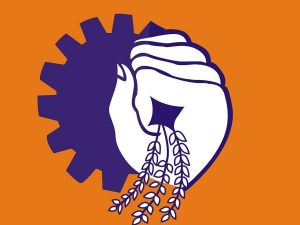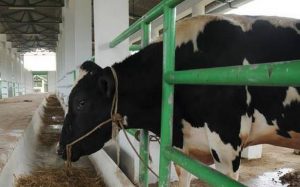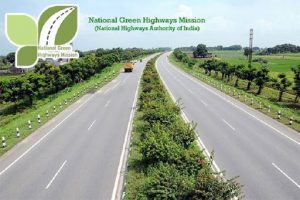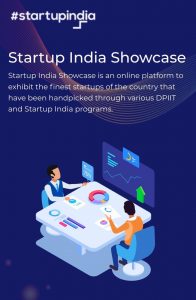Today Current Affairs: 21st July 2021 for UPSC IAS exams, State PSC exams, SSC CGL, State SSC, RRB, Railways, Banking Exam & IBPS, etc
Table of Contents
Indian Labour Conference:

The Bharatiya Mazdoor Sangh (labour union) wrote to the Prime Minister asking him to convene the Indian Labour Conference (ILC).
- It argued that since Indian Parliament has ratified Convention No 144 of the International Labour Organisation, it is now India’s legal obligation to hold the ILC in order to strengthen the tripartite mechanism.
- ILC also known as the ‘labour parliament’ of the country formed on the lines of International Labour Conference is the apex level tripartite (Government, Employers and Workers) consultative committee in the Ministry of Labour & Employment.
- International Labour Conference also known as International Parliament of Labour is a conference organized by ILO every year.
- Each member State is represented by a delegation consisting of two government delegates, an employer delegate, a worker delegate, and their respective advisers.
- The first meeting of the ILC (then called Tripartite National Labour Conference) was held in 1942 and so far a total of 46 Sessions have been held.
- The most recent session of which was held in 2015.
- The agenda of the ILC is finalised by the Standing Labour Committee which is again a tripartite body after detailed discussions.
- Function:
- To advise the Government on the issues concerning the working class of the country.
- Members:
- Central Trade Union Organisations, Central Organisations of employers, all State Governments and Union Territories and Central Ministries/Departments concerned with the agenda items, are the members of the ILC.
Indian Institute Of Heritage:

The government has decided to set up the ‘Indian Institute of Heritage’ at Noida, Gautam Buddha Nagar.
- The Institute is being set up as Deemed to be University by integrating Institute of Archaeology (Pt. Deendayal Upadhyaya Institute of Archaeology), School of Archival Studies under National Archives of India, New Delhi, the National Research Laboratory for Conservation of Cultural Property (NRLC), Lucknow, National Museum Institute of History of Art, Conservation and Museology (NMICHM) and Academic Wing of Indira Gandhi National Centre for the Arts (IGNCA), New Delhi.
- These shall become various schools of Institute.
- Indian Institute of Heritage will be a world-class university that would focus on the conservation and research in India’s rich tangible heritage, while offering research, development and dissemination of knowledge associated with heritage.
Dairy Investment Accelerator:

The Department of Animal Husbandry & Dairying (DAHD), Government of India, with a view to provide dedicated focus towards promoting & facilitating investments in the Indian Dairy sector, has setup Dairy Investment Accelerator under its Investment Facilitation Cell.
- This Investment Accelerator is a cross functional team constituted to serve as the interface with investors.
- It shall provide support across the investment cycle:
- Offering specific inputs for evaluation of investment opportunities
- Addressing queries about application to govt. schemes
- Connecting with strategic partners
- Providing on-ground assistance with state departments & relevant authorities
Animal Husbandry Infrastructure Development fund (AHIDF)
- Dairy Investment Accelerator is also generating awareness among investors about Animal Husbandry Infrastructure Development fund (AHIDF).
- AHIDF is one of the flagship schemes by DAHD, Government of India whereby Rs. 15,000 crorefund has been setup for offering financial support to entrepreneurs, private companies, MSME, Farmers Producers Organizations (FPOs), and Section 8 companies.
Green National Highway Corridor Project.:

Union Minister of Road Transport and Highways informed Rajya Sabha about the status of Green National Highway Corridor Project.
- The Government had signed loan agreement with the World Bank to develop Green National Highway Corridors (GNHCP).
- The project include Upgradation of about 781 km length of various National Highways passing through the states of Rajasthan, Himachal Pradesh, Uttar Pradesh and Andhra Pradesh.
- Out of total length of 781 km, work on 287.96 km having Civil Cost of Rs. 1664.44 cr. has been awarded.
- The schedule date of completion is December, 2025.
Ethanol Blending:

Union Minister for Petroleum and Natural Gas informed Lok Sabha about Ethanol Blending.
- The Notified National Policy on Biofuels – 2018, provided an indicative target of blending 20% ethanol in petrol by 2030.
- Ethanol Blending has Improved from 1.53% during Ethanol Supply Year 2013-14 to 7.93% ongoing ESY 2020-21
- Ministry of Petroleum and Natural Gas has published a Notification dated June 02, 2021, wherein, it has been stated that OMCs shall sell ethanol blended petrol with percentage of ethanol upto 20% as per BIS Specifications in the whole of India and Union Territories and shall come into effect from April 01, 2023.
- E-100 pilot projects has been launched at Pune city by Public Sector Oil Marketing Companies (OMCs) on June 05, 2021.
Monkey B virus (BV):

China has reported the first human infection case with Monkey B virus (BV) after a Beijing-based veterinarian was confirmed with the same a month after he dissected two dead monkeys in early March. Till date, only one case has been documented of an infected person spreading B virus to another person.
- The virus, initially isolated in 1932, is an alphaherpesvirus enzootic in macaques of the genus Macaca. B virus is the only identified old-world-monkey herpesvirus that displays severe pathogenicity in humans.
- The infection can be transmitted via direct contact and exchange of bodily secretions of monkeys and has a fatality rate of 70 per cent to 80 per cent.
- Macaque monkeys commonly have this virus, and it can be found in their saliva, feces (poop), urine (pee), or brain or spinal cord tissue.
- The virus may also be found in cells coming from an infected monkey in a lab.
- Humans can get infected if they are bitten or scratched by an infected monkey; get an infected monkey’s tissue or fluid on broken skin or in eyes, nose, or mouth; scratch or cut oneself on a contaminated cage or other sharp-edged surface or get exposed to the brain (especially), spinal cord, or skull of an infected monkey.
- Symptoms: The first indications of B virus infection are typically flu-like symptoms such as fever and chills, muscle ache, fatigue and headache, following which an infection person may develop small blisters in the wound or area on the body that came in contact with the monkey.
- Currently, there are no vaccines that can protect against B virus infection.
Startup India Showcase Platform.:

104 startups from different sectors have currently on boarded on the Startup India Showcase Platform.
- Startup India Showcase is an online discovery platform for the most promising startups of the country.
- These innovations span across various cutting-edge sectors such as Fintech, EntrepriseTech, Social Impact, HealthTech, EdTech, among others.
- Ecosystem stakeholders have evaluated, nurtured, and supported these startups.
- These startups are solving critical problems and have shown exceptional innovation in their respective sectors.
National Logistics Excellence Awards.:

With a view to turn the spotlight on the logistics sector, the Government today announced the launch of National Logistics Excellence Awards.
- The awards are in two categories, the first group includes logistics infrastructure/service providers and second one is for various user industries.
- The awards will highlight best practices including consolidation, process standardisation, technological upgrade, digital transformations, and sustainable practices.
- While the Indian logistics sector has been growing at a CAGR of 10.5%, reaching approximately USD 215 billion in value in 2020, there are systemic, interconnected problems that must be addressed to enhance its efficiency.
- Comprehensive logistics costs amount to almost 14% of India’s GDP.
- Closing India’s competitiveness gap vis-à-vis the global average of 8 percent, would make the Indian logistics sector advanced, organised and efficient, on par with global peers with the ambition of being amongst the top 25 countries in the global Logistics Performance Index (LPI).
External Benchmarks Lending Rate:

According to a recent RBI report on ‘Monetary transmission in India’, the share of outstanding loans linked to External Benchmarks Lending Rate (EBLR – like repo rate), increased from as low as 2.4% during September 2019 to 28.5% during March 2021.
- This increase in EBLR linked lending will contribute to significant improvement in monetary policy transmission.
- However, still 71.5% of outstanding loans are Internal Benchmark Lending Rate (IBLR- like base rate and MCLR) linked loans, which continues to impede the monetary policy transmission.
Internal Benchmark Lending Rate (IBLR):
- The Internal Benchmark Lending Rates are a set of reference lending rates which are calculated after considering factors like the bank’s current financial overview, deposits and non performing assets (NPAs) etc. BPLR, Base rate, MCLR are the examples of Internal Benchmark Lending Rate.
Benchmark Prime Lending Rate (BPLR):
- BPLR was used as a benchmark rate by banks for lending till June 2010.
- Under it, bank loans were priced on the actual cost of funds.
- However, the BPLR was subverted, resulting in an opaque system. The bulk of wholesale credit (loans to corporate customers) was contracted at sub-BPL rates and it comprised nearly 70% of all bank credit.
- Under this system, banks were subsidising corporate loans by charging high interest rates from retail and small and medium enterprise customers.
Base Rate:
- Loans taken between June 2010 and April 2016 from banks were on base rate.
- During the period, base rate was the minimum interest rate at which commercial banks could lend to customers.
- Base rate is calculated on three parameters — the cost of funds, unallocated cost of resources and return on net worth.
- Hence, the rate depended on individual banks and they changed it whenever their cost of funds and other parameters changed.
Marginal Cost of Lending Rate (MCLR):
- It came into effect in April 2016. It is a benchmark lending rate for floating-rate loans. This is the minimum interest rate at which commercial banks can lend.
- This rate is based on four components—the marginal cost of funds, negative carry on account of cash reserve ratio, operating costs and tenor premium.
- MCLR is linked to the actual deposit rates. Hence, when deposit rates rise, it indicates the banks are likely to hike MCLR and lending rates are set to go up.
Issues Related to IBLR Linked Loans:
- The problem with the IBLR regime was that when RBI cut the repo and reverse repo rates, banks did not pass the full benefits to borrowers.
- In the IBLR Linked Loans, the interest rate has many variables including bank’s spread, their current financial overview, deposits and non performing assets (NPAs) etc.
- Due to this, such internal benchmarks did little to facilitate any swift change in interest rates as per changes in RBI repo rate policy.
- The opacity in interest rate setting processes under internal benchmark regime hinders transmission to lending rates.
High-Altitude Balloons:

The US has planned to transmit the Internet to the people in Cuba via high-altitude balloons when their government has blocked access.
- There is an ongoing protest in Cuba against long standing restrictions on rights, scarcity of food and medicines, and the government’s poor response to the Covid-19 pandemic.
High Altitude Balloons for Internet:
- They are commonly known as Loon Balloons as the first High Altitude Balloon for providing internet was used under Project Loon.
- They are made of the commonplace plastic polyethylene and are the size of a tennis court.
- They are powered by solar panels and controlled by software on the ground.
- While up in the air, they act as floating cell towers, transmitting internet signals to ground stations and personal devices.
- They float 60,000 to 75,000 feet, above the Earth, well above commercial jetliner routes.
- They last for well over 100 days in the stratosphere before being returned to earth.
- Each balloon can serve thousands of people. But they had to be replaced every five months or so because of the harsh conditions in the stratosphere. And the balloons can be difficult to control.
NASA’s New Spacecraft: NEA Scout:

National Aeronautics and Space Administration (NASA) has announced that its new spacecraft, named Near-Earth Asteroid Scout or NEA Scout, has completed all required tests and has been safely tucked inside the Space Launch System (SLS) rocket.
About NEA Scout:
- Near-Earth Asteroid Scout, or NEA Scout, is a miniaturized spacecraft, known as a CubeSat, developed under NASA’s Advanced Exploration Systems (AES) Program.
- AES pioneers new approaches for rapidly developing prototype systems, demonstrating key capabilities, and validating operational concepts for future human missions beyond low-Earth orbit.
- Its main mission is to fly by and collect data from a near-Earth asteroid.
- It will take about two years to cruise to the asteroid and will be about 93 million miles away from Earth during the asteroid encounter.
- It will also be America’s first interplanetary mission using a special solar sail propulsion.
- So far, spacecraft have been using solar energy to power them and execute critical functions.
- This will be the first time that a spacecraft uses it as wind to generate thrust and move forward.
- It is one of several payloads that will hitch a ride on Artemis I, which is expected to be launched in November, 2021.
- Artemis I will be an uncrewed testflight of the Orion spacecraft and SLS rocket.
- It is the first in a series of increasingly complex missions that will enable human exploration to the Moon and Mars.
- NEA Scout launches to the Moon in 2021 with a fleet of other small satellites aboard Artemis 1.
- At the Moon, NEA Scout will deploy its 86-square-meter solar sail and slowly spiral out of lunar orbit.
- It will travel to a near-Earth asteroid and perform a slow fly-by, capturing up-close images of the surface.




